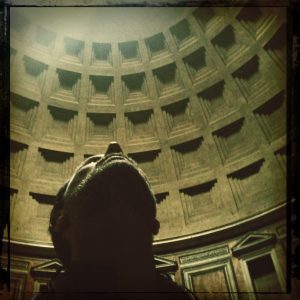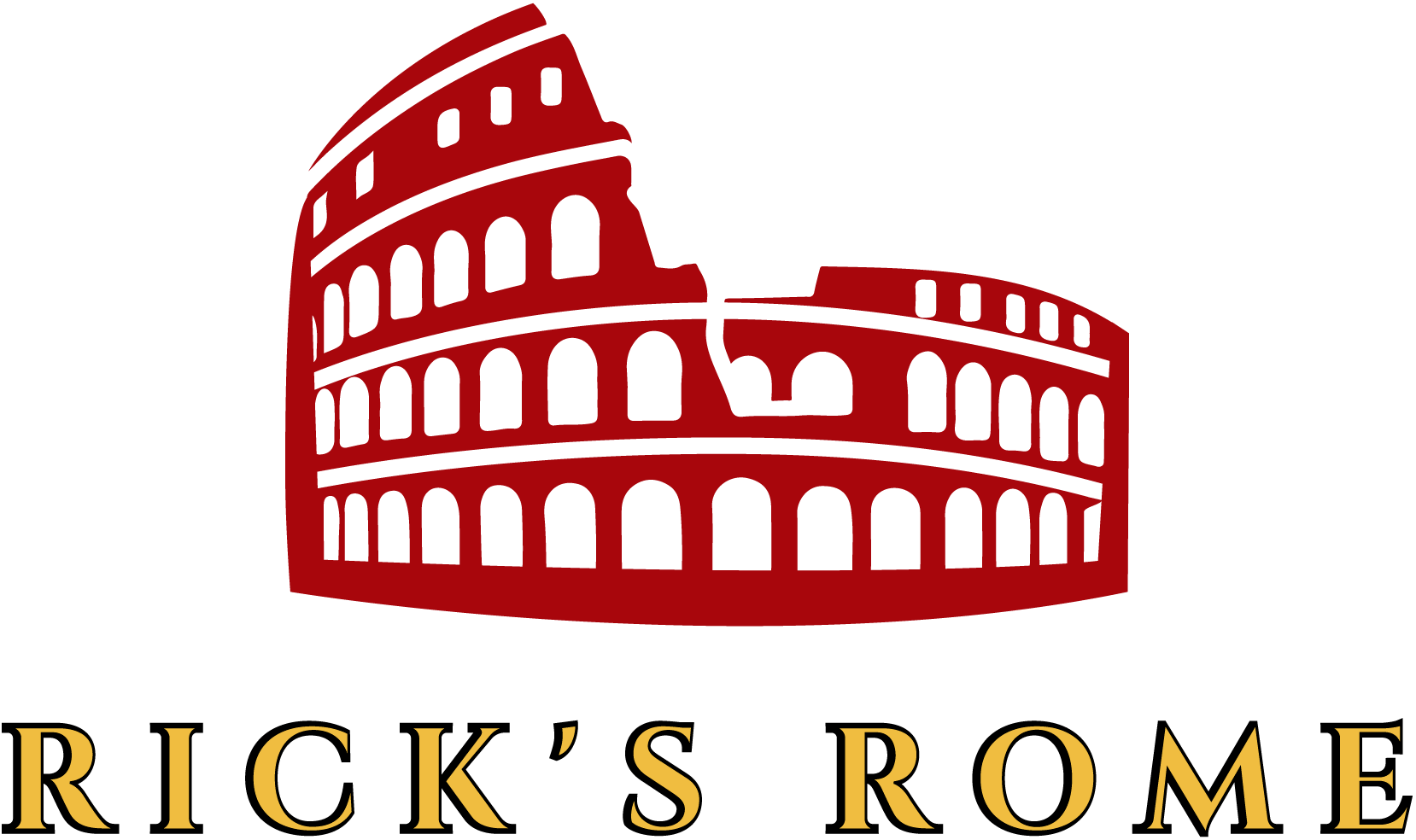Halloween in Italy is a fairly new concept, having only recently been imported from the U.S. and is still struggling to gain traction, especially outside of the larger metropolitan areas. Normally, Italians will embrace any opportunity to indulge the children. But you get the sense that they haven’t yet fully understood the reason behind this strange holiday.
For kids growing up in the U.S., Halloween is one of the best times of the year. You’re allowed to dress up like your favorite monster, superhero, or cartoon character and for doing so, you’re bombarded with enough candy to rot every tooth in your head twice over.
Frankly, I was a little confused myself as to the origins of this creepy excuse for a holiday—until I did a little research.
And since Halloween can be a time for ghost stories and tall tales of every sort, allow me to narrate one version of how this odd combination of sweet treats and departed souls came about.
Like many of our modern celebrations around the world, Halloween has its roots in ancient religious rites. The Roman version of this tale involves the Emperor Constantine and his desire to appease the masses by crafting a harmonious transition from Paganism to Christianity.
Before his rule, all Christians had to be buried outside of the Aurelian Walls. However, wanting to increase his own popularity by showing support for the latest fashion in deity-worshiping, he decided to allow the Christians to move the bones of their saints, martyrs and the rest of their ancestors from outside of Rome to within its walls.

What’s more, for full theatrical value, he dug a massive grave below the floor of the Pantheon in the very center of Rome where all the remains could be collectively buried. Voila! The Pantheon goes from a Pagan Temple to a Christian Church in the course of a single evening, and we now have ourselves a brand new holiday. You see where I’m going with this—the aforementioned evening was October 31st.
Halloween in Italy
This was not by mistake. Being a shrewd politician, he had planned it all very carefully. In doing so, he chose to undertake this task on the eve of November 1st which was/is “Tutti Santi.” Later, this would be translated into Scottish as All Hallows’ (Saints) Day and of course the night before was called All-Hallows’-Even (“evening”). Or Halloween, as we say today. Pretty clever wordsmithing, no?

As for the plethora of sweets and the subsequent cavities in the teeth of small children, I can only speculate that this more modern tradition grew out of a conspiracy pact between the candy manufacturers and the American Dental Association. I have no direct proof of this, but I do have credible sources who wish to remain anonymous. Which is understandable, I think. Because when it comes to inspiring fear in young children, ghosts and goblins have nothing on dentists.
Boo!
Oh, and here’s a photo of my little Italian daughter going all out in this year’s costume. You can see that she is really channeling the full catgirl character, even climbing the walls (literally) in an effort to be as authentic as possible.


An entertaining take!
Grazie!
i love your conspiracy theory at the end! 🙂
And it is also easy to believe that Halloween comes from ancient tradition, maybe even Roman. And the idea that Constantine was trying to smooth transition from Roman state religion to Christianity is as easy to swallow as candy corn on the 31st. In fact, many books and guide books i’ve read do agree that there is a boatload (or, more precisely, 40 cartloads) of human remains under the floor of the Pantheon. But this,according to every source i’ve seen so far, happened in the year 609. Which is a couple hundred years after Constantine lived. By saying that Constantine had a hand in it instead, are you giving us new info from some source i haven’t found, or are you in fact pulling a Constantine, with a nod and a wink smoothing the transition between two ideas that would not naturally go together?
Thanks for the great comments. Yes, you’re right, this theory might be “wishful thinking” in order to make a nice, tight story. The information was related to me by a professional tour guide in Rome. He seemed convinced, but then again, as I said, it makes a good story, so it’s easy to accept. BUT, I’m completely convinced of the conspiracy theory between the ADA and the candy makers!
I agree with paxryan about the Constantine /pantheon story . I don ‘t think those dates are correct.
Yes, again, it’s just one theory. History, like memory in general, is never perfect. When in doubt, maybe it’s best to believe in the story that you like the most. Which I guess is the same criteria to employ when choosing Paganism, Christianity, or any other religion. 🙂
Rick,
I love the story behind traditions and holidays – have researched a few myself (e.g., April Fool’s, Labor Day, Mother’s Day, etc.) Indeed the church assimilated many pagan rituals to assuage the locals…
So glad Halloween – however, ghoulish some of it is – has survived!
And you’re definitely right about the dentist coming at you with mask & instruments of torture (LOL!) being pretty darn scary 😀
Victoria
Thanks, Victoria! Yes, I also love the history behind traditions…so interesting. Regarding dentists, yes, they are definitely scarier than any Halloween ghouls. I should know, I used to be one! (a dentist, that is, not a ghoul)
I never knew this story about Halloween. I guessed there was some connection between Tutti I Santi but had never delved into it.
Thank you very much. I love the way you write. I, too, have a blog and I wish I could write as well as you.
I’m looking forward to reading your other posts.
Thanks, Shanthi! I really appreciate the positive feedback. Where can we find your blog?
Just go to my website www,languageandthecity.com. This is the link:
http://www.languageandthecity.com/#!blog/ch4e
We blog in English about London & the UK, in Italian about Rome, Milan and in French about Paris.
We normally post on Friday afternoons. Tomorrow’s blog will be in English on the UK
Thanks so much for the interest and good luck with the book.
Thanks Shanthi! And I look forward to reading your blog, which I’ll also put on my blogroll. Have a great weekend! Rick
Thanks for the history of Halloween lesson! I had no idea! And even though dentists in general decry the consumption of sweets with their accompanying deleterious effects on teeth, I believe that there is a modicum of truth to your conspiracy theory regarding the ADA and candy manufacturers. Year after year, the busiest time for dentists (i.e. most lucrative) is the two weeks prior and two weeks after Halloween, not because the children instantly develop cavities from the surplus of candy, but because the parents can’t resist those gooey, sticky, crunchy filling/tooth breakers! As for the witches, I believe that they were a product of too many Halloween indulgences resulting in very bad teeth, an unattractive smile, and a long nose with a mole on the end!!! Great blog Rick!
Thanks Richie Z! I guess conspiracy theories are a bit like ghost stories–you don’t necessarily have to believe them to enjoy them. Happy Halloween (or Tutti Santi)!!
Wait. Do you mean that there are human bones, pardon, saints’, under the floor in the Pantheon? Now, that’s creepy.
It is creepy, Jason. I’m not sure that the story has been scientifically verified, but it makes for a good yarn, don’t you think?
This is a great story! Thanks for posting! I wonder when the witches came in the scene. It looks like the accurate trend would be a martyr costume. Gotta love that St. Lucy.
Thanks Tara! As for the poor, misunderstood witches, they always seem to get a bad rap.